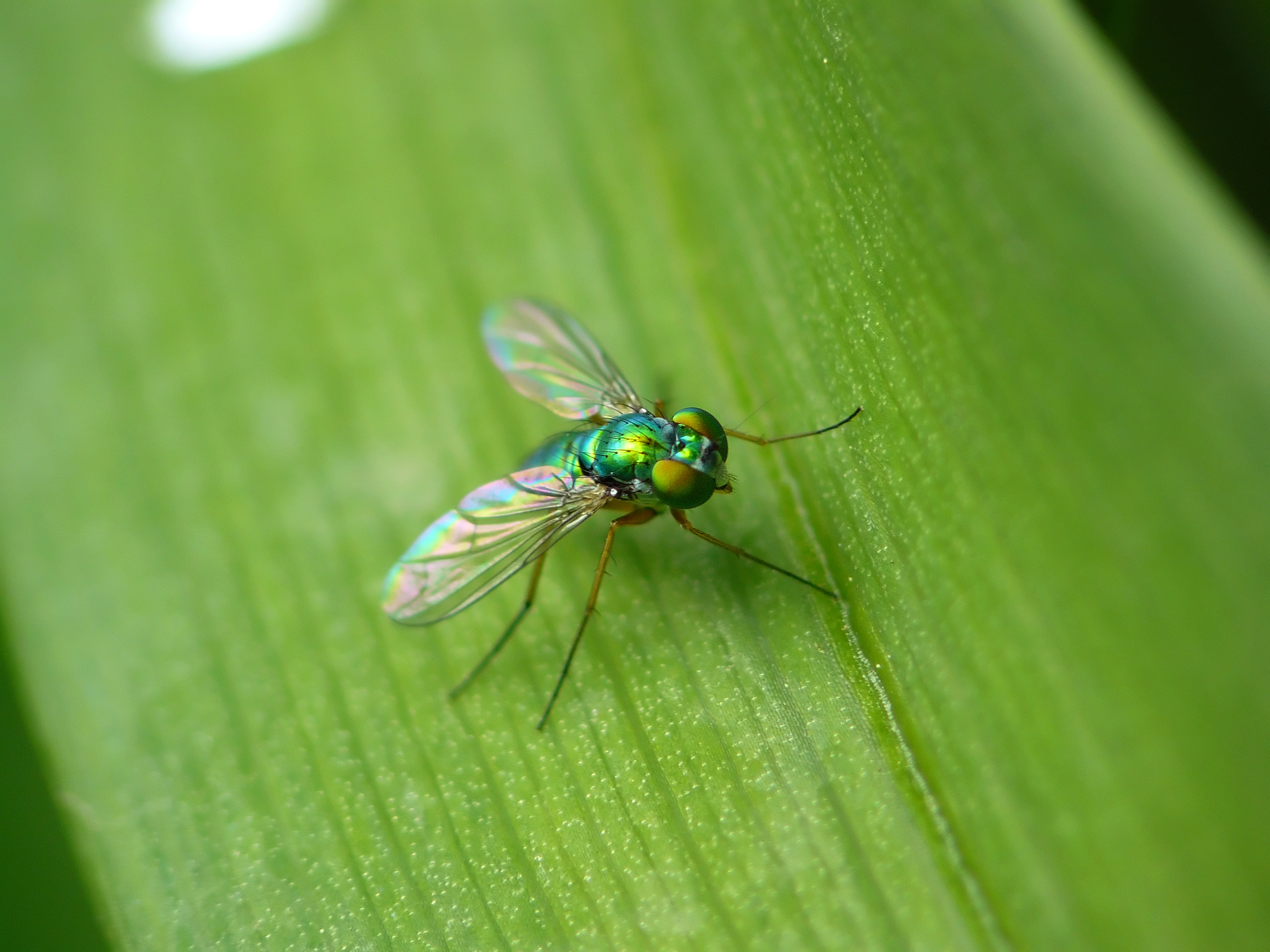 |
| A fly. |
For years, people have tried and failed to invent technology that mimics the flapping flight of birds and insects. Last summer, Robert Wood of Harvard University and a team of his colleagues managed to create such technology. Since then, they have refined their design and created robots that flap their wings, hover, and dart around like flies.
The "muscles" of the robotic flies are made of ceramic materials that contract when they come in contact with an electric field. The robots are the size of a penny, are controlled by a computer, and can flap their wings 120 times per second, nearly as often as real flies. A computer program allows them to maneuver deftly through the air. They can stay aloft for more than 20 seconds before they crash.
The robots aren't perfect. They must constantly remain plugged in to a source of power and control. And while a great deal of progress has been made, they still can't fly nearly as well as real flies. The researchers are continuing their work to create a perfect fly-like flapping device. These robots could greatly help scientists to better understand the nature of insect flight.
NOS Themes:
- Scientific ideas are subject to change. The robotic flies are constantly being improved upon.
- Science is collaborative. Robert Wood's Harvard team and other researchers are working together on the project.
It's awesome that scientists and engineers and programmers are able to make robot flies, but also kind of scary. Eventually any fly you see might be a robot with video camera eyes. I find that a bit disturbing.
ReplyDeleteThe precision required to replicate a fly's wing is astounding. Fly wings are built up by hundreds of millions of years of evolution, perfectly transformed to fly as efficiently as possible for their body size. The mechanics and performance of such tiny, mysterious wings is such an interesting thing to see constructed by humans. I found an article about robotic bees being built at Harvard University.
ReplyDeletehttp://www.scientificamerican.com/article.cfm?id=robobees-takes-off
I think that it must take a great mind to build a robot using not only aviation engineering but also microtechnology that behaves like a small insects. It requires extensive knowledge in various fields of study.
ReplyDeleteI agree with Austin, the knowledge that technology is getting so small and advanced can be a bit troubling. Especially with the lengths that the government must go to in order to maintain proper surveillance in this day and age, it's only a matter of time before cameras multiply and spread across America. What's even more worrying, though, is the implications if this technology is obtained by private entities. I shudder to think of what would happen if this fell into mischievous hands.
On a lighter note, it appears as if Harvard is interested in the same ideas, with their amusing Robobees program.
And in honor of the TED talk we watched today, here's a relevant talk about flying robots that cooperate.